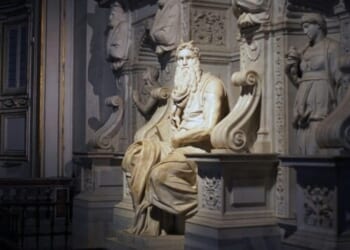The McDonnell F-101 flew for the United States, Canada, Taiwan, and… Colorado State University. Seriously.
At the advent of the jet age, with the rise of the Soviet threat, U.S. aerospace designers began working on long-range bomber escorts—also called “penetration fighters”—with the ability to penetrate enemy air defenses and attack defensive interceptors. In concept, the penetration fighter was very similar to the bomber escort role that aircraft like the P-51 Mustang performed during the Second World War. However, unlike the bomber escorts, penetration fighters would not operate in such close concert with their bombers. Instead, the penetration fighter would zoom ahead, engaging with the fighter jets scrambling to intercept the oncoming bombers.
At McDonnell Aircraft Corporation, a then-relatively new aerospace manufacturer who had shown promise with ambitious early designs, the F-101 Voodoo was developed to fill the penetration fighter role. Different versions of the F-101 would eventually enter service with the U.S. Air Force—the first aircraft in the “Century Series” of fighter jets, so named for their designations in the 100’s.
Introducing the McDonnell F-101 Voodoo
The founder of McDonnell, James “Mac” McDonnell, liked to name his aircraft for supernatural elements—Banshee, Phantom, Moonbat, Goblin, Demon, and so on. For the F-101, McDonnell held with this pattern, choosing the designation Voodoo.
The new jet, built to penetrate enemy air spaces, had a maximum speed of Mach 1.72, a range of 3,000 miles, and a service ceiling of 58,400 feet—all relatively impressive specifications for the 1950s. The two Pratt & Whitney J57-P-13 turbojets gave the plane good acceleration, a respectable rate of climb, and a smooth transition across the Mach threshold. Indeed, the F-101 set a number of speed records. In 1957, during “Operation Firewall,” the F-101 set a world speed record of 1,207 miles per hour. The record would shortly thereafter fall at the hands of a second Century Series jet, the Lockheed F-104 Starfighter. But for a brief time, the F-101 was the fastest thing in the sky.
The F-101 also set records for the LA-NYC-LA time trial, making the there-and-back journey in just six hours and 46 minutes. The F-101 also set multiple one-way records, getting from Los Angeles to New York in three hours and 36 minutes, and from New York to LA in only three hours and seven minutes.
Unveiled at the height of the Cold War, the F-101 wasn’t just fast. It was also outfitted to carry a slew of conventional weapons and nuclear weapons. Specifically, the F-101 was designed to carry the Mk 28 nuclear bomb, with a yield ranging from kilotons to more than a megaton of TNT—hundreds of times larger than the bombs that wiped out Hiroshima and Nagasaki. Several tactical fighters were designed to carry the Mk 28, including the A-4 Skyhawk and A-5 Vigilante.
The F-101’s Second Life as a Storm Chaser
The F-101 also flew for Canada, Taiwan, and… Colorado State University. Seriously.
The CSU Department of Atmospheric Science operated a modified F-101 Voodoo, known as the “Gray Ghost,” for severe thunderstorm research in the 1970s. Operating from Buckley Air National Guard Base, the CSU Voodoo carried the civil registration N8234. The jet bore the markings “COLORADO STATE UNIVERSITY” and “SEVERE STORM RESEARCH” on the fuselage—and may well mark the only time an American research university was given the keys to a supersonic fighter jet.
About the Author: Harrison Kass
Harrison Kass is a senior defense and national security writer with over 1,000 total pieces on issues involving global affairs. An attorney, pilot, guitarist, and minor pro hockey player, Harrison joined the US Air Force as a Pilot Trainee but was medically discharged. Harrison holds a BA from Lake Forest College, a JD from the University of Oregon, and an MA from New York University. Harrison listens to Dokken.
Image: Wikimedia Commons.

















